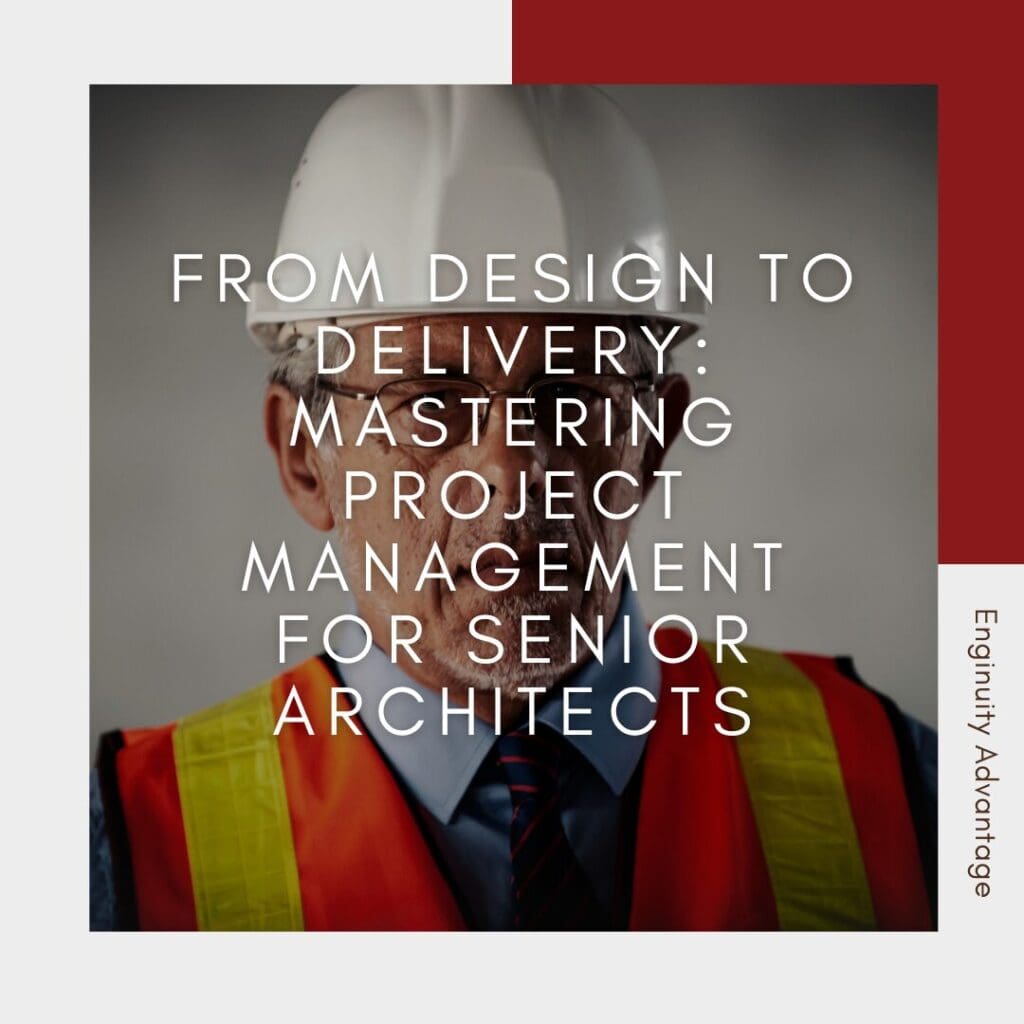From Design to Delivery: Mastering Project Management for Senior Architects

In the world of architecture, the journey from concept to completed structure is a complex and multi-faceted process. Senior architects are not just visionaries; they are responsible for orchestrating the many moving parts of a project to ensure successful outcomes. Project management plays a pivotal role in balancing design aspirations, technical requirements, budget constraints, and client expectations.
The ability to navigate architectural project management effectively requires more than just design expertise. It demands strategic planning, leadership, coordination with multidisciplinary teams, and the capacity to foresee challenges before they arise. From securing approvals and managing stakeholder communication to overseeing construction timelines and maintaining design integrity, senior architects must wear multiple hats to see a project through to successful delivery.
This comprehensive guide explores how senior architects can refine their project management skills to ensure seamless project execution. We will cover the essential phases of project management, discuss best practices for collaboration, and explore strategies to mitigate risks while delivering high-quality architectural solutions on time and within budget.
The Foundation of Architectural Project Management
Successful architectural project management begins with a clear understanding of the project’s scope, objectives, and constraints. The initial planning phase lays the groundwork for all future decisions, ensuring that stakeholders are aligned and resources are allocated efficiently. Senior architects must develop detailed project roadmaps, taking into account design feasibility, site conditions, sustainability considerations, and regulatory requirements.
A strong foundation in project management principles helps architects navigate unexpected challenges while maintaining control over budgets and timelines. Establishing clear project goals, defining key performance indicators, and outlining roles and responsibilities early in the process can significantly reduce delays and miscommunications down the line.
The Role of Leadership in Project Execution
Senior architects are often required to act as leaders who bridge the gap between creative design teams, engineers, contractors, and clients. Effective leadership ensures that all stakeholders remain engaged and that project goals align with both aesthetic aspirations and functional requirements. Leadership in architectural project management goes beyond delegation; it involves fostering collaboration, resolving conflicts, and inspiring teams to maintain a shared vision.
One of the most critical leadership skills for senior architects is decision-making under pressure. Architectural projects frequently encounter unforeseen complications, from material shortages to construction delays. Having the ability to quickly assess risks, evaluate alternative solutions, and communicate changes to the team is essential for keeping projects on track.
Planning and Pre-Design: The Blueprint for Success
Before the first sketches take shape, the planning and pre-design phase serves as the foundation for the entire project. This stage involves comprehensive research, feasibility studies, site analysis, and preliminary cost assessments. Senior architects must work closely with urban planners, engineers, and clients to develop a thorough understanding of the project’s context.
During this phase, establishing project goals, sustainability objectives, and regulatory compliance requirements is crucial. Detailed site surveys, environmental impact assessments, and zoning evaluations ensure that the design aligns with both legal and functional considerations. Additionally, defining key milestones and deliverables at this stage helps streamline future phases of the project.
Design Development and Collaboration
The design development phase is where architectural vision begins to materialize. Collaboration between architects, engineers, and consultants is essential to translate conceptual ideas into actionable blueprints. Ensuring effective communication among all parties is key to maintaining design integrity while addressing structural, mechanical, and electrical requirements.
Senior architects must manage iterative design reviews, ensuring that feedback from clients and technical experts is incorporated without compromising the project’s core vision. Utilizing advanced design software, such as Building Information Modeling (BIM), can facilitate seamless coordination and prevent costly revisions later in the process.
Budget Management and Cost Control Strategies
One of the greatest challenges in architectural project management is balancing design excellence with financial constraints. Cost overruns can derail even the most well-planned projects, making proactive budget management a top priority for senior architects. Establishing accurate cost estimates, negotiating with suppliers, and implementing value engineering techniques help ensure financial feasibility.
Regular budget reviews and contingency planning can mitigate financial risks. Senior architects should engage in transparent discussions with clients about budget limitations and explore alternative materials or construction methods to maintain cost efficiency without compromising quality.
Navigating Permits and Regulatory Approvals
Architectural projects must comply with local building codes, zoning laws, and environmental regulations. The permit acquisition process can be lengthy and complex, requiring meticulous documentation and coordination with regulatory authorities. Senior architects play a crucial role in ensuring that projects meet legal requirements while advocating for innovative design solutions.
Understanding jurisdictional guidelines and maintaining strong relationships with permitting agencies can streamline the approval process. Early engagement with municipal authorities, clear documentation, and proactive communication can help avoid delays that often result from regulatory roadblocks.
Construction Administration and Quality Control
Once construction begins, senior architects must transition from design oversight to active project monitoring. Construction administration involves site inspections, contractor coordination, and quality assurance to ensure that the final product aligns with design specifications. Regular site visits and collaboration with general contractors help identify potential issues before they escalate.
Quality control is paramount during the construction phase. Senior architects must enforce material standards, review shop drawings, and oversee construction techniques to guarantee durability and safety. Establishing clear protocols for issue resolution, documenting site progress, and conducting thorough walkthroughs at key project milestones contribute to project success.
Risk Management and Problem-Solving in Architecture
No architectural project is without risk. From unpredictable weather conditions to supply chain disruptions, unforeseen challenges can impact timelines and budgets. Senior architects must anticipate potential risks and develop contingency plans to minimize disruptions. Risk management involves assessing vulnerabilities, implementing proactive solutions, and maintaining flexibility in project execution.
Problem-solving skills are invaluable in architectural project management. Whether resolving design conflicts, negotiating with contractors, or addressing client concerns, senior architects must adopt a proactive approach to problem resolution. Having a clear escalation plan and fostering open communication among all stakeholders ensures that challenges are addressed efficiently.
Enhancing Collaboration Among Teams
Project success in architecture relies heavily on collaboration. Senior architects must ensure seamless communication between all stakeholders, including clients, engineers, and construction teams. By fostering an environment where feedback is valued and information flows freely, teams can work more efficiently and maintain design integrity.
Establishing regular project meetings, using collaborative software tools, and implementing a clear workflow process can significantly improve teamwork. Senior architects should take the initiative in resolving disputes, maintaining accountability, and ensuring that all project members remain aligned with the project’s objectives.
Elevating Architectural Project Management
Mastering project management is essential for senior architects seeking to deliver exceptional architectural solutions. Beyond design expertise, the ability to manage teams, budgets, timelines, and regulatory requirements distinguishes successful architects from their peers. By refining leadership skills, embracing technology, and adopting proactive risk management strategies, senior architects can drive projects from concept to completion with efficiency and precision.
At Enginuity Advantage, we understand the complexities of architectural project management and provide industry professionals with the resources and insights needed to excel. By staying ahead of evolving industry trends and continuously improving project management capabilities, senior architects can shape the built environment with confidence and expertise.
Unlock Dream Careers & Elite Talent: Just One Click Away!


